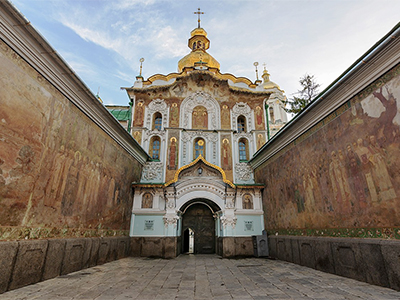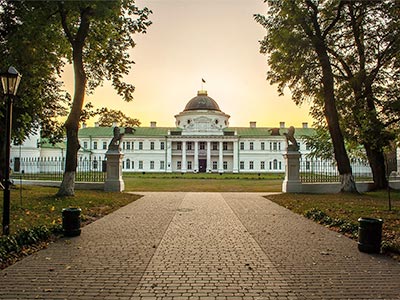 18.05.2023
Glazed tiles from the Carpathian Mountains
18.05.2023
Glazed tiles from the Carpathian MountainsThere is an area on the eastern slopes of the Carpathian Mountains, which are situated in the western port of Ukraine, that is called Hutsulshchyna. The scenery there is of great beauty: undulating hill-like mountains thickly covered with trees and bushes interspersed with open pastures; numerous fast rivers, that become turbulent after heavy rains and snows; romantic, fairy-tale atmosphere. The Hutsuls, dwellers of this area, have retained their own age-old traditions, habits and customs, ethnic features and their very peculiar dialect.
Hutsul ceramics
Applied arts are part of their daily life. Every little home utensil seems to have been made as an art object. At the traditional fairs in the town of Kosiv you can find a great variety of embroidered towels, shirts, dresses, decorations of all possible kinds. The diversity of Hutsul ceramics impresses anyone without fail: dozens of different kinds of pots, jars, bowls, plates, ingenious ornamentation, rich colours, sheen of the glaze. They look like precious things rather than earthenware household items!
Earthenware pottery was made by proto-Ukrainian tribes even without the potter’s wheel thousands of years ago. In the times of the mediaeval Kyivan Rus — Ukraine glazing was introduced. In the 11th century glazed tiles were made for Interior decoration. In the 16th century guild of potters was among the most numerous ones.
The Hutsuls made different things of cloy, from children’s whistles to glazed tiles that decorated the stoves. And everything was painted in a peculiar Hutsul style. A wide variety of elements was used in the creation of ornaments in which a big role was played by stylized floral designs. Bowls, pots, tiles, candlesticks, vases were pointed with stylized tops of trees, bushes, leaves, sunflowers, chamomiles, fantastic flowers and plants.
Hutsul stoves
Hutsul stoves decorated with glazed tiles deserve a special mention. Each tile is truly a work of art, each having its own design. The Hutsul stoves can be called creations of several arts: architecture, painting and decorative art which is an extremely rare combination in traditional folk art. The Hutsul stoves attracted attention of connoisseurs ot the end of the 19th century. In 1880, Francis Joseph I, emperor of Austro-Hungarian Empire of which western Ukraine was a part, paid a visit to the town of Kolomiya in the land of Halychyna and saw tiles painted by Oleksa Bakhmatyuk. The emperor was so fascinated with Bakhmatyuk‘s art that he bought a whole stove decorated with tiles created by this artist.
Every tile on the Hutsul stove has its own design and picture: stylized human figures, fantastic and real animals, Imaginary and well-known plants, architectural fantasies, tillers, shepherds, riders, soldiers, fairs, weddings, religious ceremonies and scenes, historical events. One can see fanciful pictures, too: a lion playing a musical instrument or a goat smoking a pipe.
The stove as a whole and each individual tile among the many that decorate it are true artistic creations. And it is a living art that continues to be created In accordance with age-long traditions.
-
 27.02.2024
World of pysanka
Embark on a journey into the captivating world of Pysanka, the Ukrainian...
27.02.2024
World of pysanka
Embark on a journey into the captivating world of Pysanka, the Ukrainian...
-
 29.01.2024
Exploring the Treasures of Kyiv’s Lavra Monastery
In the heart of Kyiv lies the venerable Lavra Monastery, a testament...
29.01.2024
Exploring the Treasures of Kyiv’s Lavra Monastery
In the heart of Kyiv lies the venerable Lavra Monastery, a testament...
-
 13.01.2024
Kachanivka, Eden on Earth
Rich in history, it hosted renowned artists, notably poet Taras Shevchenko.
13.01.2024
Kachanivka, Eden on Earth
Rich in history, it hosted renowned artists, notably poet Taras Shevchenko.

